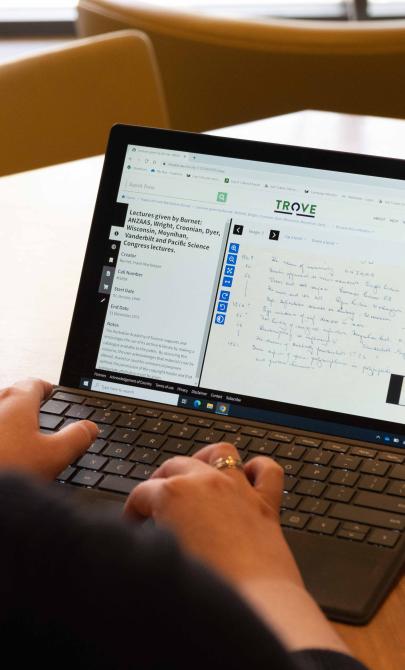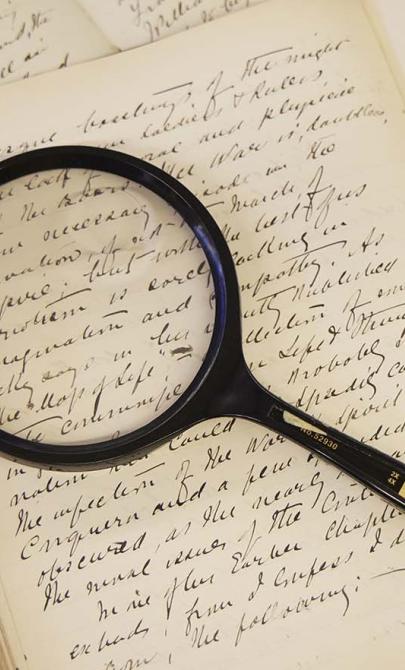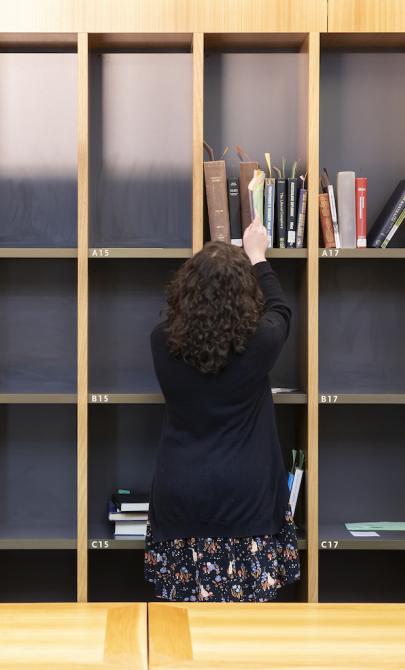O’Connor Collection
Key items in the collection
The Norm O’Connor Collection consists of 148 tapes and 18 boxes of papers and publications.
The tapes were recorded by O’Connor in Melbourne and many other parts of Victoria between 1953 and 1969. He was helped by Pat O’Connor, Maryjean Officer and occasionally other members of the Victorian Folk Lore Society. Most of the tapes contain Australian folk songs, including bushrangers’ songs, sea shanties and songs of the gold rushes. There are also British folk songs, Greek and Turkish music, African songs, dance music, recitations, poetry, jokes, children’s rhymes, yarns, music for the fiddle, accordion, mouth organ and other instruments, and recollections.
Among the performers and interviewees are Alf Dyer, Mary Gilmore, Bill Harney, Con Klippel, the Lumsden family, Simon McDonald, Alan Marshall, Harry Hastings Pearce, Sally Sloane, Ian Turner and Dougie Young. There are also recordings of concerts at the 1967 Port Phillip Folk Music Festival and performances of the Austral Singers, the Billabong Band, the Upper Murray Old Times Dance Band and other groups.
The papers that accompanied the recordings consist of poems, music, songbooks, indexes to the recordings, field notes, cutting books and cutting files, records of the Victorian Folk Lore Society, newsletters, magazines, books, photographs and slides.
About Norman O’Connor
Norman O’Connor (1923-2015) was born in Melbourne, where he has lived most of his life. As a boy he was sickly and only had a few years of schooling. He went to business school, but soon afterwards enlisted in the Army. While recuperating at a convalescent unit, he was drafted into the Australian Army Cartographic Unit at Bendigo, where he remained for the rest of the War. He learnt to be a screenprinter and worked with artists and printmakers such as Arthur Boyd. He remained in the Army until 1949, producing advertising material for the Citizens Military Forces. He then established a business, PhotoScreen. He took early retirement and worked at home; in later years he helped his son with his computer business.
During World War II O’Connor joined the Communist Party of Australia and it was about this time that he first heard European folk music. As an Australian nationalist and a communist, he was concerned that traditional Australian music and folklore should be preserved and protected against the influx of American popular culture. He was impressed by the musical Reedy River, based on the 1891 shearers’ strike, which was performed by the New Theatre in 1953. The Victorian Folk Lore Society was formed soon afterwards and O’Connor was one of the original members. He was the second President of the Society, succeeding Alan Marshall, and his wife Pat O’Connor was later the Treasurer.
The Society considered that its primary task should be to record the old songs and stories of colonial Victoria, especially those that were popular in rural areas. O’Connor was the only member of the Society who owned a tape recorder and he agreed to undertake the task. He was referred to the poet and entertainer Simon McDonald and his first recording of McDonald was made at a pub in Creswick in 1953. Most of his early recordings were in Melbourne, but later he devoted his holidays to excursions to different parts of Victoria. He travelled with his wife and two children and another member of the Society, Maryjean Officer. Officer, who took notes and photographs during the recordings, was related to prominent Western District pastoralists and had many useful contacts in rural Victoria. O’Connor’s collecting work was confined to Victoria and he was essentially interested in the social history and folklore of Victoria in the 1850–1914 period. He also acquired copies of tapes made by collectors elsewhere, such as Lloyd Robson in Tasmania and Edgar Waters in New South Wales. By the late 1960s he was discovering fewer sources and he brought his project to an end.
Background to the collection
The collection was purchased by the Library from O’Connor in 1987.
The Norm O’Connor Collection is kept together within the Oral History Collection. All the recordings have been individually catalogued and detailed summaries of the recordings are also available. The 18 boxes of papers and publications are also kept in the Oral History Collection. They have not been organised, but a rough listing of the contents of the boxes is kept with the papers.
This guide was prepared using these references:
- Davy, Gwenda, Oral history interview with Norm and Pat O’Connor, 1989–90, ORAL TRC 2502.
- Gall, Jenny, Mary Jean Officer: life, work and ideology, National Library of Australia News, vol. 19 (1), Oct 2008, pp. 15-18.
- Sullivan, Chris, Oral history interview with Norm O’Connor, 1984, ORAL TRC 1720.
- Waters, Edgar, Oral history interview with Norm and Pat O’Connor, 2000, ORAL TRC 4577.



